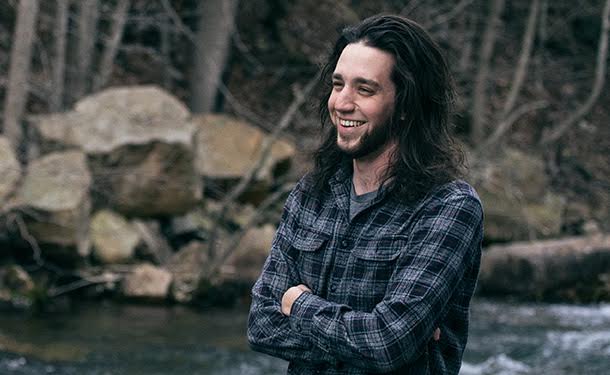Here’s just of few of Bryce Yoder’s highlights from his first “semester” out of college working as a vegetation and ecological restoration intern in Yosemite National Park in California:
- uprooting and transplanting fragile Great Sequoia saplings;
- solo-backpacking for two days and 13 miles up Half Dome;
- learning how to rock climb;
- traveling 50 minutes on mountain roads to get groceries;
- and a memorable snowball fight with coworkers outside a Giant Sequoia grove.
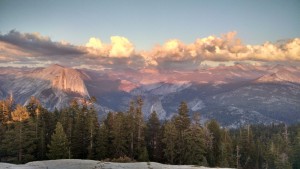
Vistas in Yosemite National Park in California, where Bryce Yoder spent the fall of 2015. (Courtesy photos)
And that’s just the highlight reel. You could safely say that he took advantage of all Yosemite had to offer.
The 2015 Eastern Mennonite University graduate opted for the post-graduation internship to gain more experience in his field – and also because of the opportunity to spend time in yet another spectacular national park. While studying environmental sustainability at EMU, the Harrisonburg native had volunteered at Shenandoah National Park.
Three months in the high Sierras gave him memories of lifetime, but also valuable experience that he’ll carry in the future.
“The most important thing is to get experience,” Yoder said “I know a lot of people say that in their lines of work, but it’s definitely true. Get as much experience as you can before and after you graduate, even if it’s not 100 percent the direction you want to go. Employers can tell who has worked in the field and who hasn’t.”
Due to the extreme specificity of most field research projects, it’s hard to train for an exact line of work, said Yoder, who chose an environmental science concentration to his degree in environmental sustainability. But he now has a a variety of skills necessary to conduct field work.
Restoring eroded areas
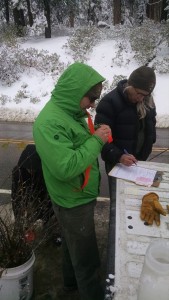
In Yosemite, Yoder worked with the Student Conservation Association, a non-profit organization that places young people in national parks and other natural spaces, contributing labor and learning skills as they help maintain and protect.
Yosemite is a major tourist attraction, with over 4 million visitors in 2014 alone.
“There tends to be a lot of erosion caused by visitors walking off trail and in non-protected vegetated areas,” Yoder said. “The main goal of our branch was to reintroduce native vegetation back into eroded areas in order to restore the natural ecosystem of Yosemite.”
Yoder and his crew planted more than 700 plants, and the process was much more complicated than simply sticking seeds in the ground. After selecting seeds, crew members cleaned off the chaff, or nongerminating material. Then, the seeds were sent to a third party that initiates young plant growth. The plants return to Yosemite as juveniles and are grown in nurseries until they mature. Finally, the crew plants them.
“The park scientists are extremely careful about keeping the delicate balance of the park’s ecosystem in check,” Yoder said.
The natural ecosystem impressed Yoder daily throughout his internship. “The vistas in this park are world renowned and should not be missed.” Yoder said. “I feel honored to have contributed to its overall beauty…this is a giant playground for people who love the outdoors.”
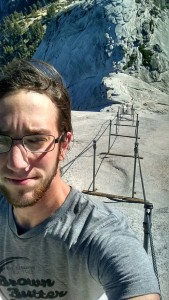
Challenges came in living in a remote area, where even buying groceries required a major excursion.
“The worst experience was when one of the other interns who I usually got a ride with had car issues … I was more or less unable to find rides to the grocery store for a few weeks,” Yoder said. “Thankfully though, this was at the end of most employees’ seasons, so a lot of people were giving away their extra food to the poor interns.”
Fieldwork opportunities as an undergraduate
Yoder decided to apply for an SCA internship because he’s enjoyed the opportunity before, working in Shenandoah National Park with an SCA crew on a fish population study. His prior experience with expensive field equipment and another SCA crew helped.
At EMU, his study of environmental sustainability presented early opportunities for fieldwork.
“I worked closely with professors Jim Yoder and Doug Graber Neufeld on the Bergton stream restoration project, which was awesome, “Yoder said. “The two of them have provided me with great advice and support in terms of my career in environmental science, and I’ve also just learned a ton from them.”
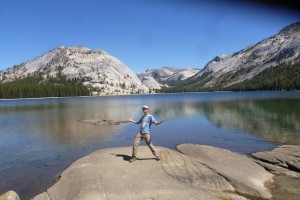
He also some fun collecting data, mountain biking on dirt roads to collect stream water samples.
In the future, Yoder hopes to move back to the West as a full-time employee of the National Park Service. Graduate school isn’t out of the question either, once he hones in on what he wants to study.
But at least for this next “semester” of his life, Yoder has other things to keep him busy. He will be the interim manager of BruCrew, a student-owned landscaping and maintenance business, while junior Jordan Leaman is on his cross-cultural to the Middle East.
“I am also volunteering with the Valley Conservation Council in Staunton about once a week to help organize data and convince more farmers to fence off cattle from their streams,” Yoder said.
